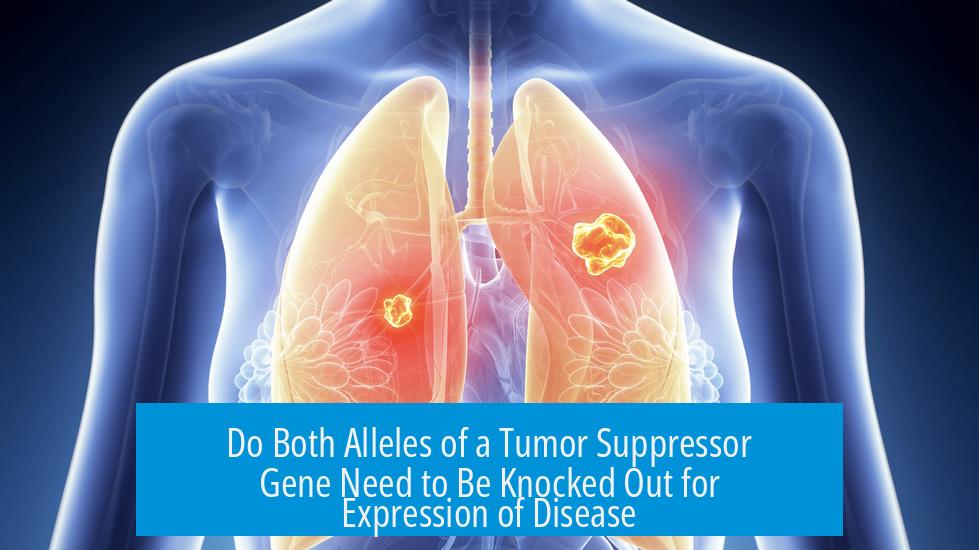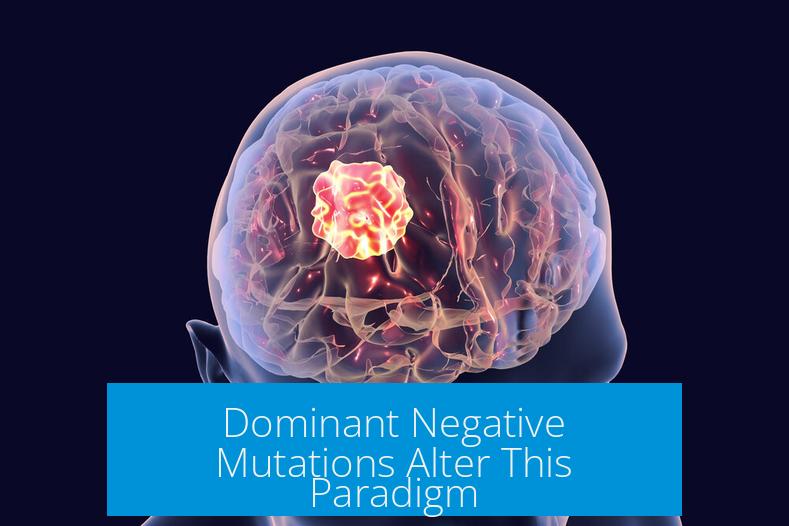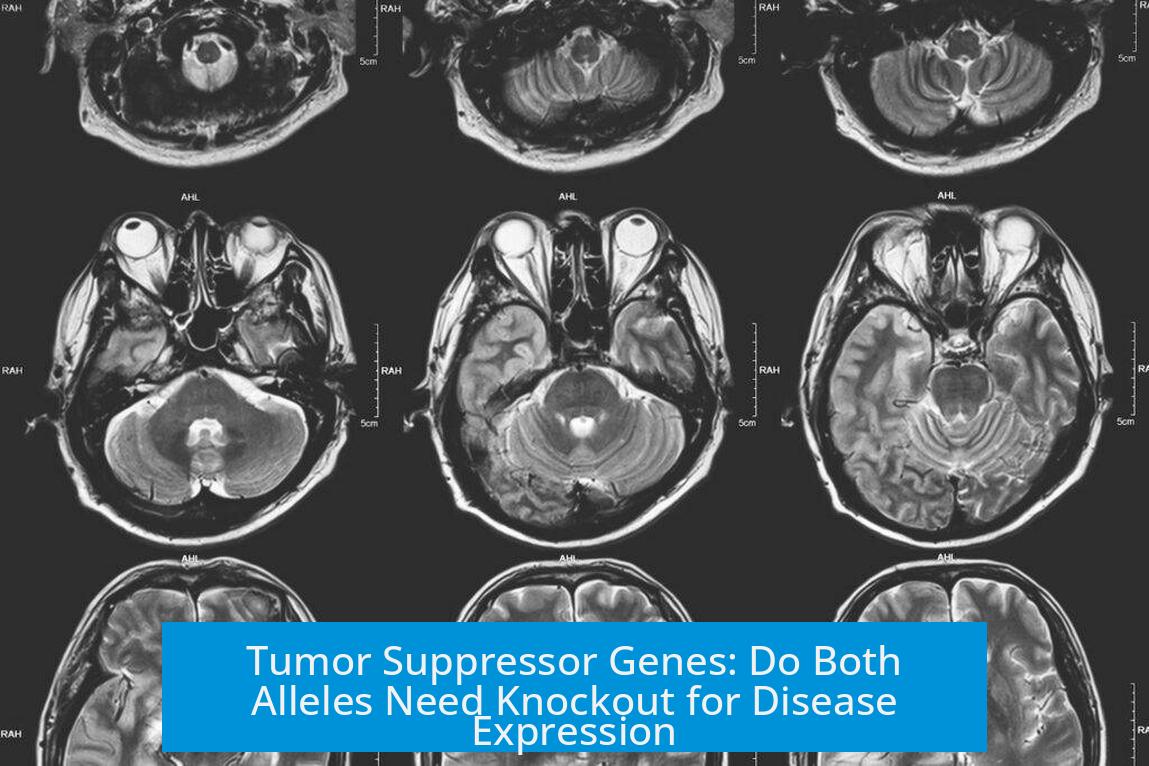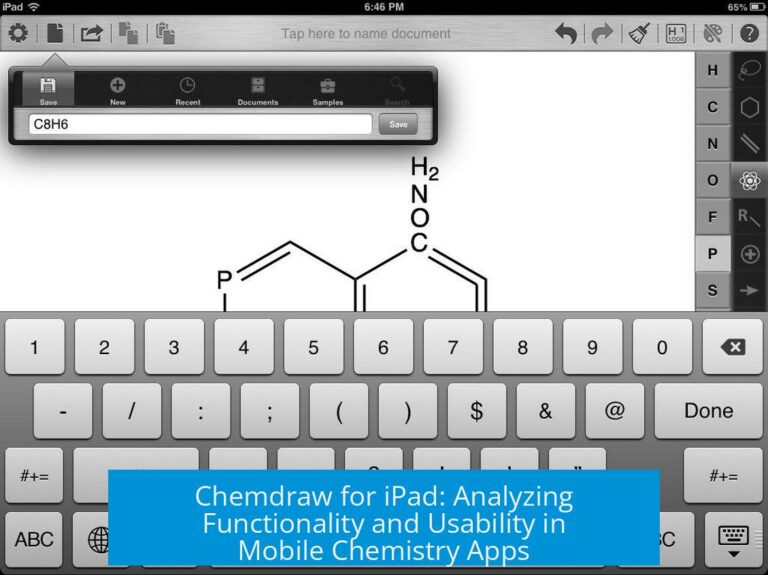Do Both Alleles of a Tumor Suppressor Gene Need to Be Knocked Out for Expression of Disease?

The expression of disease linked to tumor suppressor genes typically requires the inactivation of both alleles. However, exceptions exist where a mutation in just one allele causes disease through mechanisms such as dominant negative effects or haploinsufficiency.
Background: Tumor Suppressor Genes and Their Role
Tumor suppressor genes act as cellular safeguards, preventing uncontrolled cell growth. They encode proteins that regulate cell division, repair DNA, and induce apoptosis when necessary. Loss of function in these genes can drive cancer development.
Classically, tumor suppressor genes follow a recessive mutational model. Both alleles within a given cell must be inactivated to impair function sufficiently and produce disease, a concept first articulated in Knudson’s two-hit hypothesis.
The Two-Hit Hypothesis Explained
Knudson’s two-hit hypothesis states that two genetic “hits” or mutations are required to inactivate both copies of a tumor suppressor gene. The first mutation can be inherited (germline), making the individual predisposed to cancer. The second mutation arises somatically in a tissue cell, culminating in complete loss of function.
In this model:
- Individuals inherit a defective allele from one parent.
- Only one additional mutation is needed in the normal allele of a cell for tumor development.
- Thus, both alleles are ultimately knocked out in the diseased cells.
Dominant Negative Mutations Alter This Paradigm

Some tumor suppressor gene mutations disrupt protein function even when only one allele is mutated. Such mutations produce defective protein subunits, which interfere with normal protein complexes—this is called a dominant negative effect.
A classic example is the TP53 gene. The functional p53 protein forms a tetramer composed of four subunits. If one allele produces a mutated p53 subunit, it can integrate into these tetramers. This disrupts the complex’s tumor-suppressing ability, despite the presence of normal subunits produced by the other allele.
“If one allele is mutated, tetramers composed of both normal and truncated p53 subunits disable tumor suppressive function, facilitating cancer development.”
Animal studies support this. Mice engineered with mutations in one p53 allele could not restore tumor suppression even when an additional normal gene was inserted. The mutant subunits dominated and disabled function, overriding normal protein complexes.
Haploinsufficiency and Dominant Mutations
Aside from dominant negative effects, some tumor suppressor genes show haploinsufficiency, where loss or mutation of one allele reduces gene function enough to cause disease. For example, mutations in the NF1 gene act dominantly. One mutant allele decreases functional protein below a critical threshold, producing disease phenotypes.
Thus, not all tumor suppressor gene mutations are recessive; many are dominant or partially dominant due to haploinsufficiency or dominant negative interference.
Summary Table: Mutation Types and Disease Expression
| Mutation Type | Alleles Inactivated | Mechanism | Disease Expression |
|---|---|---|---|
| Classic Recessive | Both alleles | Complete loss of function | Disease after two hits |
| Dominant Negative | One allele mutated | Mutated protein disrupts complex | Disease with one mutated allele |
| Haploinsufficiency | One allele mutated | Reduced protein dosage | Disease with partial loss |
Clinical and Genetic Implications
Understanding mutation type affects diagnosis and risk assessment. Inherited mutations in tumor suppressor genes may predispose individuals to cancer if only a single somatic mutation affects the normal allele.
However, if a dominant negative mutation is present, disease may arise even without inactivation of both alleles. This influences genetic counseling because dominant mutations often show familial inheritance patterns and earlier disease onset.
Gene therapy approaches must consider dominant negative effects. Simply adding a functioning gene copy may not restore normal activity if mutant protein integrates into multimers and blocks function.
Conclusions and Key Takeaways
- Typically, disease expression requires inactivation of both tumor suppressor gene alleles per the two-hit hypothesis.
- Dominant negative mutations can cause disease with mutation in only one allele by poison subunit formation.
- Haploinsufficiency causes disease due to insufficient gene product from a single mutated allele.
- Dominant tumor suppressor mutations contribute to familial cancer syndromes and altered inheritance patterns.
- Complete gene expression loss requires null alleles in both copies, but clinical phenotypes may occur with partial loss or dominant interference.





Leave a Comment